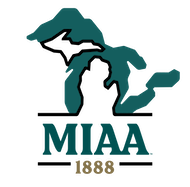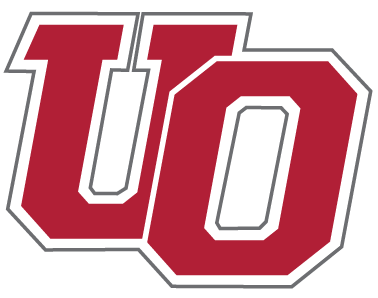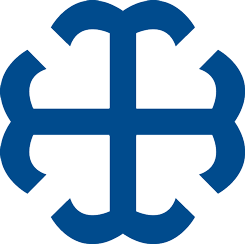Founded March 24, 1888
Updated through 2016-17 season
The Michigan Intercollegiate Athletic Association (MIAA) is America's oldest collegiate athletic conference.
The 2016-17 school year marked the 129th consecutive year of operation for the NCAA Division III affiliated conference. The MIAA was founded March 24, 1888. From the very beginning, the MIAA has conducted full-season championships in multiple sports. There have been changes in some of the sports (bicycle racing and Indian club juggling have long since disappeared, and basketball did not even exist in 1888), but these changes have served to develop the MIAA into one of America's finest NCAA Division III conferences, today offering 20 sports for men and women.
The MIAA's continuity is noteworthy. Of the 13 schools that have had full membership, nine are still members -- Adrian, Albion, Alma, Calvin, Hope, Kalamazoo, Olivet, Saint Mary's and Trine. Albion and Olivet were charter members although Albion is the only member to hold continuous membership. Ex-members were Michigan State University (1888-1907), Eastern Michigan University (1892-1926), Hillsdale College (1888-1960), and Defiance College (1997-2000).
The MIAA's membership list went unchanged from 1954 until 1997 when the Defiance College of Ohio and Saint Mary's College of Indiana were invited to join. It also marked the first time that the league added members outside the State of Michigan. The league stipulated, however, that the name of the conference would not change. The inaugural year of current members are: Adrian (1908), Albion (1888), Alma (1902), Calvin (1953), Hope (1926), Kalamazoo (1896), Olivet (1888), Saint Mary's (1997) and Trine (2004). Defiance left the conference after two years of membership.
The MIAA marked a historic note in 2002 when the league accepted Wisconsin Lutheran College of Milwaukee, Wisc. as an associate member for the purpose of competing in football. Wisconsin Lutheran left the MIAA after the 2007 season to join another conference. In May, 2017 the MIAA announced that beginning in the fall of 2018 Finlandia University of Hancock, Michigan would become an associate member for the purpose of being part of the league football schedule.
Tri-State University became a conference member in 2004-05 upon its acceptance as a provisional NCAA member. Tri-State became a full member of the NCAA on August 1, 2007. On August 1, 2008 Tri-State changed its name to Trine University.
* * *
James Heckman of Hillsdale is considered the "Father of the MIAA." After several schools had sponsored successful track and field days from 1884 to 1887, Heckman promoted the idea of a permanent league. The snow was deep in Michigan when the first delegates met in Jackson on March 17, 1888, to organize the MIAA. During the train ride to the meeting place, the delegates might have read the weekly newspapers and observed that the snow was nothing compared to the great blizzard which had just devastated the Atlantic coast -- one of the most damaging snowfalls in our country's history.
They might also have read of the death a week earlier of Kaiser William I in Germany and the speculation that his grandson, William II, might become emperor, since the Kaiser's son, Frederick William, was already mortally ill. William II did become emperor -- and as Kaiser Wilhelm led the world into chaos a quarter-century later. Thus, in 1888, the seed was sown for World War I, a tragedy indeed, but an event that was followed by the emergence of college athletics into major American activity.
Grover Cleveland was president then, but later lost to Benjamin Harrison in the 1888 election. College debating societies in 1888 argued on the topic of protective tariffs, a topic timely in the 1980s.
Our delegates in March 1888, though informed of the day's major topics, could hardly have been aware of the tremendous impact on collegiate athletics which was to be caused by a birth which took place on March 4 at Voss, Norway. Had they been able to see into the future, they might have attached interest to the fact that the carriagemaker of Voss, Lewis Rockne, named his newborn son Knute Kenneth.
In Michigan, the state population was two million and 13 schools were offering classes on a college level. Of the schools which were to figure in MIAA history, Eastern Michigan was the largest with 714 students. Albion's enrollment was listed as 451, Hillsdale 450, Michigan State 314, Olivet 277, Adrian 150, Hope 148, Kalamazoo 143 and Alma 95. The University of Michigan had grown to giant proportions in 1888 with 93 instructors and 1,671 students.
Among the denominational schools, the enrollment figures included many students taking work on a high school level; at Kalamazoo, for example, 98 of the 143 were preparatory students, and only 45 were taking college work. As a result, athletic teams of those years included both high school and college students, and five or six years of participation on one school's teams was not unusual.
A week after this historic meeting, delegates from Albion, Hillsdale, Michigan and Olivet drew up the MIAA's first constitution.
* * *
Less than three months later, the first MIAA track and field meet was held at East Lansing with competition on May 31, June 1-2, 1888, in baseball, track and tennis.
The spectators at a college event in 1888 were sure to include some Civil War veterans, since the Grand Army of the Republic was at its zenith in that era. A college student group was almost certain to include graduates of a log schoolhouse, since 442 such buildings were still in use at that time.
Hillsdale was the MIAA's first track champion. Other competing colleges included Albion, Michigan State, and Olivet.
Track and field events in that first meet included the 100-yard dash, 200-yard dash, 880-yard run, high jump, long jump, shot put, hammer throw and mile relay. Other events included at the first Field Day included lawn tennis, wrestling, Indian club swing, horizonal and parallel bar performing, bicycle racing, sparring, and tug-of-war.
1888 FIELD DAY WINNERS
| 110-yard dash | Charles VanFleet, Hillsdale | :10.7 |
| 220-yard dash | Charles VanFleet, Hillsdale | :23.7 |
| 880-yard run | Edward Ward, Hillsdale | 2:12.0 |
| High Jump | Charles Carnahan, Michigan State | 5-0 |
| Long Jump | Thomas Gale, Albion | 19-6 |
| Hammer Throw | John Hooper, Michigan State | 68-10-1/2 |
| Shot Put | John Hooper, Michigan State | 32-2 |
| Mile Relay | Hillsdale | 3:35.0 |
The 440-yard dash, mile run, high hurdles and pole vault were introduced in 1889. The two mile run and discus became league events in 1912 and the javelin replaced the hammer throw in 1913.
In 1889, at the second annual MIAA Field Day, Albion and Olivet engaged in an exhibition "football match." In 1891 Albion defeated Hillsdale at Hillsdale 36-4 in the first intercollegiate football game in the MIAA, but it wasn't until 1894 that football was recognized as an official league sport.
Basketball became a league sport in 1911, followed by cross country (1922), golf (1934), wrestling (1969-1981), soccer (1970) and swimming (1971).
In 1978-79, the league combined into a single structure the administration of the men's and women's athletic programs of the member schools.
A book written to commemorate the 100th anniversary of the MIAA, "Celebrating A Century of the Student Athlete," was the first place winner in a national competition sponsored by the College Sports Information Directors Association.
In 2016-16, the MIAA sponsors championships in 11 sports for men -- football, cross country, soccer, and golf in the fall; basketball, swimming & diving and indoor track & field in the winter; and baseball, tennis, outdoor track & field and lacrosse in the spring, and 11 sports for women -- cross country, golf, soccer and volleyball in the fall; basketball, swimming & diving and indoor track & field in the winter; and softball, tennis, outdoor track & field and lacrosse in the spring.
* * *
Intercollegiate sports for women at MIAA schools have roots that go much deeper than the 1978-79 implementation of a common governance.
Six years after the league was founded the first Albion College tennis tournament, held in May 1894, was a coed event.
By February 1899, the Albion College student newspaper reported: "Interest in basketball has not been confined to the men this year, but has extended to the ladies of the institution. After about two more weeks of practice, the ladies will be ready to receive challenges from our sister colleges."
In 1910 Albion's defeat of Hillsdale in women's basketball by a 36-7 score caused this editorial comment: "Of course, the score was very gratifying to us, but the important question is what these games mean to do in the way of skill, coolness and presence of mind under trying circumstances, but they also develop physical and moral course, self-control and ability to meet success or failure with dignity."
The first attempt to organize a women's athletic program for MIAA members occurred in 1936 when Albion invited all of the MIAA schools to a play day and convention. Approximately 100 women from Adrian, Albion, Hillsdale, Kalamazoo, and Olivet colleges participated in archery, tennis, volleyball, basketball, badminton, tennis, softball, and swimming. This began an informal association of the women. Activities added in later years included chinese checkers, darts, and ping pong.
The first formal organization for women in college athletics in Michigan occurred in 1941 with the drafting of a constitution for what was to be known as the Athletic Federation of Michigan College Women (AFMCW).
While the MIAA suspended play during World War II there was some competition among the women. In 1940, Albion defeated Alma 4-1 in a field hockey game which replaced the cancelled homecoming football game between the schools.
By 1946, two separate athletic organizations for women had been organized in Michigan, creating some confusion. Members of the original group changed their name to the Women's Michigan Intercollegiate Athletic Association (WMIAA) while promoters of the new state organization, mostly the larger universities, remained known as the AFMCW.
The executive board of the WMIAA in 1951 reaffirmed the value of its activities, noting that the new state group could not supply the same needs. A new WMIAA constitution was ratified in 1952. In May 1961, it was decided that the play days would be discontinued and the archery and tennis tournaments became the only formal activity of the women's association.
In May 1977, the MIAA Presidents adopted a policy favoring the bringing together of men's and women's athletics at their institutions into a single organization. The single league structure was implemented in the 1978-79 school year.
Cross country was added as an MIAA sport for women in 1981-82 as archery was dropped, and soccer was added in 1989-90. Field hockey ended as a women's sport after the 1990 season. Golf was added as a women's sport in 1991-92. Lacrosse began league play in 2012-13 and indoor track & field in 2015-16.
* * *
Since 1934-35, the MIAA has presented an All-Sports Award to the member school with the best cumulative performance in all conference sports during a school year. Since 1981-82, the award winner has been determined on the basis of both men's and women's sports. Beginning in the 1998-99 school year, the MIAA began presenting awards for the best cumulative finish in men's and women's sports as well as the All-Sports Award, now known as the Commissioner's Cup.
Calvin won the MIAA Commissioner's Cup in 2016-17 with 135points. Calvin also won both the 16-17 Men's All-Sports Award and Women's All-Sports Awards. Hope has won the All-Sports honor 36 times while Albion has captured the award 14 times, followed by Kalamazoo 13, Calvin 11 and Alma 5.
* * *
The Kalamazoo College men's tennis team has a winning streak that is unparalleled by any amateur, high school, college, or professional team in America.
The Hornets have won or shared every MIAA men's tennis championship since 1936 -- a string of 77 consecutive titles! In 1962 and 2003, Kalamazoo had to share the crown with Hope after the Dutchmen won the dual meet showdown between the schools, 4-3 in 1962 and 7-2 in 2003, while the Hornets took the season-ending tournament to cause the co-championship.
In 2013, Calvin, Hope and Kalamazoo finished in an unprecedented three-way tie for the championship, with Calvin upsetting the Hornets 6-3 in an early season match to snap a 55-match MIAA winning streak. Kalamazoo got revenge on the Knights later in the season, defeating Calvin 6-1 to win the MIAA tournament.
From April 15, 1935, to April 22, 1962, Kalamazoo won 155 straight MIAA dual meets. From 1962 to the April 15, 2003 loss to Hope, the Hornets won 241 in-a-row. Since 1935, Kalamazoo has a conference dual match record of 467-3.
Current multiple-year outright league champions through the 2016-17 season are: men's cross country, Calvin, 30 years; women's swimming and diving, Calvin, 13 years; men's soccer, Calvin, six years; men's outdoor track & field, Calvin, six years; women's outdoor track & field, Calvin, five years; baseball, Adrian, four years; men's golf, Hope, four years; men's lacrosse, Albion, three years; women's golf, Hope, three years; women's tennis, Hope, three years; men's basketball, Hope, two years; women's cross country, Hope, two years; women's indoor track & field, Calvin, two years; Calvin, two years, volleyball.
* * *
MIAA member schools are active in Division III of the NCAA, both as participants and tournament hosts, as well as being involved in the governance of the Association.
MIAA member colleges have won 23 national Division III championships. NCAA Division III history was made in 1991-92 when the MIAA claimed two national championships in basketball -- Calvin the men's title and Alma the women's. MIAA teams claimed the NCAA championship in volleyball three times over four years, Calvin in 2014 and 2016 and Hope in 2014. The league has had 98 individual NCAA national championship performances since 1978.
The best team finishes by MIAA schools in NCAA Division III championship events are: baseball, Adrian, fourth in 2008; men's basketball, Calvin, first in 1992 and 2000; men's cross country, Calvin, first in 2000, 2003, 2004 and 2006; football, Albion, first in 1994; men's golf, Olivet, seventh in 1998; men’s soccer, Calvin, second in 2009, 2011 and 2016; men's swimming and diving, Hope, second in 1995; men's tennis, Kalamazoo, first in 1976, 1978, 1986, 1987, 1991, 1992 and 1993; men's outdoor track & field, Calvin, second in 2002; wrestling, Olivet, ninth in 1984; women's basketball, Hope, first in 1990 and 2006 and Alma, first in 1992; women's cross country, Calvin, first in 1998 and 1999; women's golf, Saint Mary’s, fourth in 2003 and 2010; softball, Hope, third in 1991 and Alma, third in 1999 and 2000; women's swimming, Hope, second in 1994; women's tennis, Kalamazoo, third in 1986; women's outdoor track and field, Calvin, second in 2001 and 2004; and volleyball, Calvin, first in 2010, 2013 and 2016 and Hope, first in 2014. The MIAA began sponsoring lacrosse and indoor track & field, both for men and women, in the 2010s decade, but to date has not had a top ten national finisher in these sports.
MIAA members have hosted NCAA national championship events in baseball, men's and women's basketball, men's and women's cross country, men's and women's golf, men's and women's swimming/diving, men's and women's tennis, men's track and volleyball.











